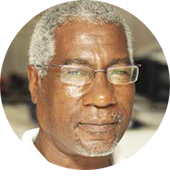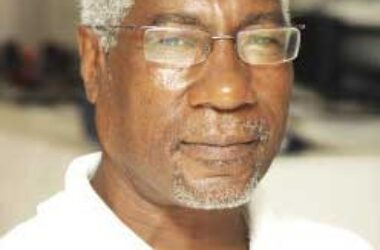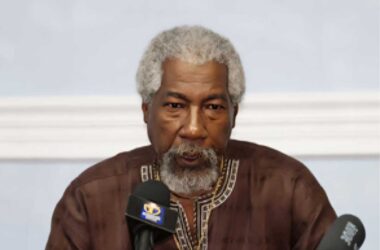
SUNDAY, June 18, 2023 was observed as Father’s Day across The Caribbean and next day, on Monday June 19, ‘Juneteenth’ events were celebrated across the USA in commemoration of June 19, 1865, when Slavery was officially abolished there.
‘Juneteenth’ observances are not only for America, but more so as another important date in the history of Trans-Atlantic Slavery to be remembered as much as Emancipation Day in the former British Empire (today’s Commonwealth) as the date when Slavery was officially abolished in the British Empire on August 1, 1834, as on April 27, 1848 when France officially abolished slavery.
Saint Lucians, at home and abroad, annually follow the ‘Juneteenth’ observances in the USA, most understandably unaware that Saint Lucia has its own ‘Juneteenth’ date of national significance.
On June 18, 1795, Saint Lucian Freedom Fighters – invariably called ‘Brigands’ and ‘Maroons’, ‘Neg Mawon’ (‘Runaway Slaves’), ‘Insurgents’ and ‘Soldats Esclaves’ (‘Military Slaves’) defeated a British force led by Colonel James Stewart, chasing them from Morne Fortune to Martinique after overrunning them.
June 18, 1795 marked the first real move by liberation fighters in the West Indies, influenced by the French Revolution of July 14, 1789 – and abolished slavery.
The French Revolution, with its motto of “Liberty, Fraternity and Equality” was influenced by the 1776 American Independence revolution that enslaved Africans and their descendants had participated in; and since the French had supported the 13 American colonies demanding independence from the British, the two European states started attacking each other’s colonies, including Saint Lucia.
The British and French had already been warring at sea over the Helen of The West’s strategic military location from 1605 to 1763, but in 1794 the French ‘Republicans’, having beheaded King Louis XVI, declared slavery abolished in the French colonies, including Saint Lucia.
After declaring slaves free in the French West Indies, the French government supported them by arming and training them to fight — first for Liberty, then Fraternity and Equality.
Saint Lucia’s already-trained former ‘Soldat Esclaves’ (‘Military Slaves’) became a growing band of freedom fighters, launching attacks on British ‘Royalists’ and their plantations — and encouraging others everywhere to revolt.
A significant role in Saint Lucia’s upheavals against the British was played by Victor Hughes, a French revolutionary sent to fan the flames of revolution in Martinique, Guadeloupe and Saint Lucia.
Saint Lucia’s freedom struggle would take a serious turn in 1791 in Soufriere, when three enslaved persons – two men and a woman – were beheaded for planning a plantation revolt, their heads then mounted on pikes and displayed publicly to discourage others.
The Soufriere decapitation enraged the enslaved everywhere and dozens escaped to join the armed freedom fighters — and their force grew with support from Hughes and freed French ex-slaves.
In 1793, France declared war on Britain and in 1794 a British force arrived in Barbados and attacked Martinique and Saint Lucia.
But the ‘capture’ of Saint Lucia never happened because the British invaders had only succeeded in capturing the military fortifications at Morne Fortune.
In 1794, Hughes dispatched Gaspar Goyrand, one of his firebrand revolutionary agents, to Saint Lucia, with soldiers and supplies from Guadeloupe – and they started inflicting serious blows on the British.
By 1795, Soufriere had become the stronghold of ‘Republicanism’ in Saint Lucia and the hotbed exploded again after the liberationists beheaded a couple ‘Royalists’, then embarked on an island-wide military campaign against the British, using guerilla tactics, in Dennery, Micoud, Vieux Fort, Choiseul, Soufriere, Canaries and Anse-la-Raye.
But the peak event took place in the shadow of The Pitons on April 22, 1795, when another British regiment landed in Vieux Fort and launched a series of lighting attacks against the freedom fighters there, who retreated toward Soufriere, to be followed by the British in a tactical maneuver that led to the greatest battle for Saint Lucia’s Freedom from Slavery.
The freedom fighters, led by Goyrand, were laying in wait at Fond Doux in Soufriere and after a brief eight-hour battle the British suffered almost 200 dead and over 100 wounded.
Colonel Stewart and his remaining troops beat a hasty retreat to Vieux Fort, pursued by the freedom fighters through Laborie and Choiseul, shamefully boarded their ships and hastily retreated to their post in Castries, at Morne Fortune.
After the ‘Victory at Rabot’, the liberationists took control of the entire south of the island and then proceeded north, where they joined northern colleagues and took-over the Vigie and Pigeon Island peninsula, a strategic naval location the British and French fought many-times-over.
By the middle of 1795, Saint Lucia was liberated by the freedom fighters and on June 18, Colonel Stewart and the remaining British troops were again forced to hastily and shamefully retreat, this time evacuating to Martinique (then still in British hands).
Goyrand was appointed Governor of Saint Lucia and immediately declared Slavery abolished island-wide – and from then on, in short time, Saint Lucia became a revolutionary springboard from where large numbers of trained and experienced guerillas were dispatched to start and support revolts in St. Vincent and Grenada, supporting the fights led by Chatoyer and Julien Fedon, respectively.
In 1796, a major force led by Major General Ralph Abercrombie invaded and recaptured the island for the British, ending Saint Lucia’s year-long embrace with republican freedom — but not before Goyrand and his revolutionaries had abolished Slavery, nine years before the 1804 Declaration of Haitian Independence that led to the universally-recognized Abolition of TransAtlantic Slavery and establishment of the world’s first Black Republic.
But it all started on the night of June 18, 1795 – Saint Lucia’s ‘Juneteenth’ — with the first genuine revolution by ex-slaves in Europe’s ‘West Indies’.
———————————–
DISCLOSURE: Information in this article was sourced from an article by Clyde P.L. Vincent entitled ‘Emancipation in Action: The Battle of Rabot Saint Lucia 1795’, the complete text of which will be published in The VOICE’s 2023 Emancipation Day Supplement on Saturday July 29.)











